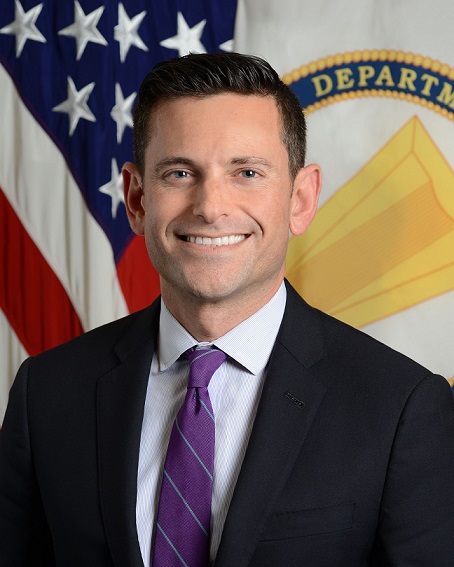Published by The Lawfare Institute
in Cooperation With

On July 26, President Donald Trump lashed out against the transgender community, declaring in a series of tweets that the United States would not “accept or allow transgender individuals to serve in any capacity in the U.S. Military.” In so doing, Trump brought to broad public attention a matter that most Americans likely had no prior reason to consider: the military’s policies toward transgender individuals serving—or seeking to serve—in the United States military.
Trump’s August 28th presidential memorandum to the Secretaries of Defense and Homeland Security formalized his Twitter declaration into official policy guidance. The guidance purports to accomplish two principal objectives: first, halting impending policies that would have provided for enlistment and commissioning of openly transgender people into the military (“the ban”); and second, punting to the Secretaries the challenge of how to remove those transgender soldiers, sailors, airmen, and Marines currently serving from the ranks (“the purge”).
And yet, true to form and similar to his previous failed endeavors to ban Muslims or replace Obamacare, Trump’s official policy memorandum is full of factual inaccuracies and ambiguities. Perhaps its most fundamental error is in misunderstanding—or misrepresenting, or both—the nature and meaning of the military’s current and historical policies regarding military service of transgender individuals. Clearly, Trump is focused on undoing the actions taken by Secretary of Defense Ash Carter in 2016, when he announced that he was “eliminating policies that can result in transgender members being treated differently from their peers based solely upon their gender identity, rather than upon their ability to serve.” But what is apparent from the language of Trump’s directive is that he and his team are clueless as to the state of play before 2016, what it was at the end of the Obama administration, and the true impact on the military.
Trump’s memorandum starts from the misleading premise that until 2016, the Department of Defense (DoD) “generally prohibited openly transgender individuals from accession into the United States military and authorized the discharge of such individuals” and that the Obama administration “dismantled” this “established framework.” From that premise, the memo directs DoD “to return to the longstanding policy and practice on military service by transgender individuals that was in place prior to June 2016.”
For those, like us, who worked on the implementation of the June 2016 policy changes—and far more so for transgender service members and their commanders—it is laughable to suggest that there was anything like a prior “established framework,” or “longstanding policy or practice” for military service by transgender individuals prior to 2016.
Let us be clear: Transgender troops have been serving in the armed forces for decades, in some cases even finding ways to do so more or less “openly." For example, during the Army’s recent review, we found anecdotally that a number of formerly active component Soldiers switched their gender markers when they transitioned to the reserve component, obviating the necessity of in-service transition but finding a way to continue serving the country they love in the gender with which they identified.
Moreover, there has never been a categorical ban on military service by transgender individuals comparable to DoD’s longstanding policy of prohibition against homosexuality that ultimately morphed into “Don’t Ask, Don’t Tell,” the legislative prohibition on open service by gays, lesbians, and bisexuals. With respect to transgender service, and unlike "Don't Ask, Don’t Tell,” there was no history of investigations and hearings held to determine whether a service member was transgender, nor comparably large discharges of service members believed to be transgender. None of this is to suggest that transgender service members were uniformly welcomed into the military with open arms, acknowledged, and treated fairly; but any negative (or even positive) treatment of transgender service members was the result of individual actions and decisions at the unit level rather than as a result of any overarching policy.
In fact, the only DoD-wide policy to ever suggest something like a “ban” on transgender service members was DoD’s policy regarding service members with physical disabilities. Prior to August 2014, this policy lumped “Sexual Gender and Identity Disorders” into a broader category of “conditions and defects of a developmental nature” that would render service members subject to “appropriate administrative action.”[1] Inevitably, this ambiguous terminology proved confusing to both military leaders and medical professionals, given that nothing else in DoD policy defines or refers to so-called “Sexual Gender and Identity Disorders.” The DoD transgender working group heard evidence that although some commanders believed that they were required to discharge individuals identifying as transgender, others believed they were not obligated to do so.
In August 2014, DoD clarified and updated this policy, eliminating its listing of “conditions and defects of a developmental nature.” The Military Services were still authorized to separate service members on the basis of certain unidentified “defects” , but only if they “interfere with assignment to or performance of duty.” As a result, the update both removed the archaic language that some had interpreted to require discharge of transgender service members while prohibiting the discharge of any person on such basis unless their condition interfered with their work.
It was against this background that Secretary Carter acknowledged in 2015 that transgender service members were “being hurt by an outdated, confusing, inconsistent approach” that was “contrary to our value of service and individual merit.” In short, the problem was not that transgender service members were “banned” in a meaningful sense, but rather that transgender individuals were being harmed by outdated military policies that failed to provide them equal treatment if they could do their jobs, and threatened them with the possibility of arbitrary dismissal.
Secretary Carter’s June 2016 policy accomplished three objectives: (1) clarified that transgender service members were allowed to serve and could not be discharged solely on the basis of their gender identity; (2) provided a process by which transgender service members could transition in the military while maintaining all relevant standards while obtaining necessary and appropriate medical care; and (3) directed that accession policies be updated to allow for individuals who had previously undergone a gender transition or related treatment to enlist or commission into the military services if they had been stable in their conditions for at least 18 months.
The last of these changes was scheduled to go into effect no later than July 1, 2017. However, on June 30—the last day before this deadline—Secretary of Defense Jim Mattis announced that he would “defer the start of accessions [of transgender individuals] for six months,” in order “to evaluate more carefully the impact of such accessions on readiness and lethality.” Trump’s August 25th directive indefinitely delayed that timeline, maintaining a ban on new recruits who have already transitioned successfully, as judged by a medical professional. By itself, this is unlikely to have a major impact on military recruiting. However, Trump’s prohibition on transgender accessions, combined with dismantlement of the Military Accessions Vital to the National Interest (MAVNI) program that provides an expedited pathway citizenship for noncitizens through service, as well as Trump’s recent announcement ending the Deferred Action for Childhood Arrivals (DACA), will be significant, particularly for the Army. These two programs enable the Army to recruit from populations with specialized skills; putting up more barriers to service while subjecting hundreds of current soldiers to “immediate deportation” makes the job of recruiting the best America has to offer even more difficult.
This context renders Trump’s instruction “to return to the longstanding policy and practice toward military service by transgender individuals that was in place before June 2016” as nonsensical. The June 2016 policy changes did not introduce transgender people to the military or constitute an end to a program of discharging of transgender service members. Rather, it merely acknowledged transgender servicemembers’ existence in the ranks and provided a framework for their open service, holding them to the same standards as every other one of their colleagues and guaranteeing the same rights and benefits.
In reality, a true “return to the longstanding policy and practice on military service by transgender individuals” would be not a ban on transgender troops but rather to a muddled and incoherent approach that provided little guidance to transgender service members or their commanders. And, to the extent Trump’s memorandum imposes an unprecedented ban on service by transgender individuals, it punts to the Secretaries the challenge of how to purge those transgender soldiers, sailors, airmen, Marines, and coast guardsmen currently serving from the ranks while cruelly offering those service members little predictability as to when or if they will be kicked out.
Against the backdrop of a chaotic and confused White House and Secretary Mattis’ ongoing internal review, we believe that now is the time for Senate and House leaders on both sides of the aisle to step up. Rather than relying on Trump administration officials to decide this important issue, Congress should hold hearings, with testimony from real experts—both inside and outside of government—to determine the true impact on military effectiveness and lethality, unit cohesion, and budget that artificially reducing the recruiting pool, forcing an unnecessary witch hunt, and ripping out well-trained and integrated service members from their units would have on the military.
Richard Eisenberg was special counsel to both the General Counsels of the Army and the Air Force during the Obama administration. Alex Wagner was chief of staff to the 22nd Secretary of the Army and is a fellow at the Truman National Security Project.
[1] Notably, other categories for discharge included “Stammering or Stuttering,” “Allergy to Uniformed Clothing,” and “Unsanitary habits including repeated venereal disease infections.”






